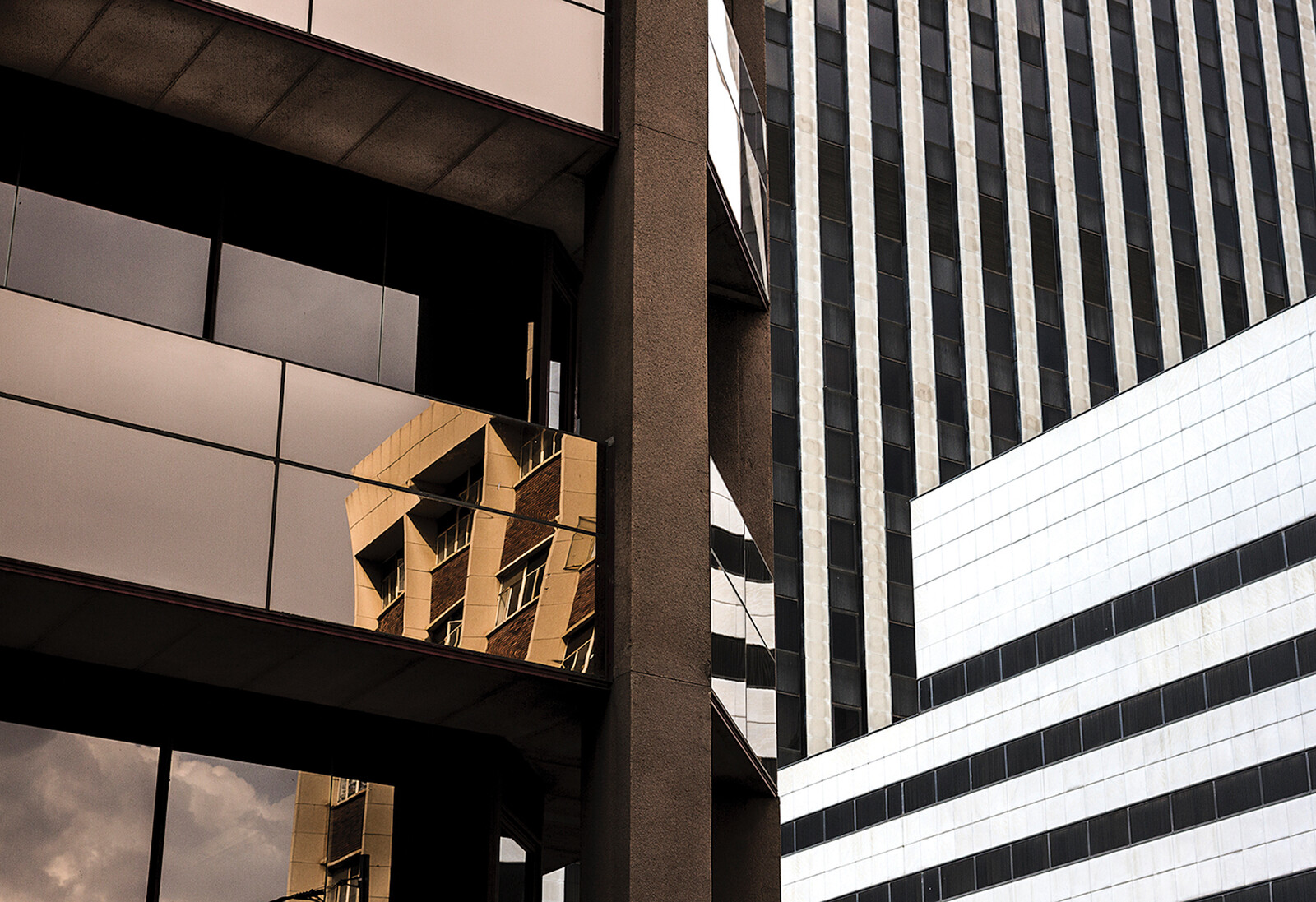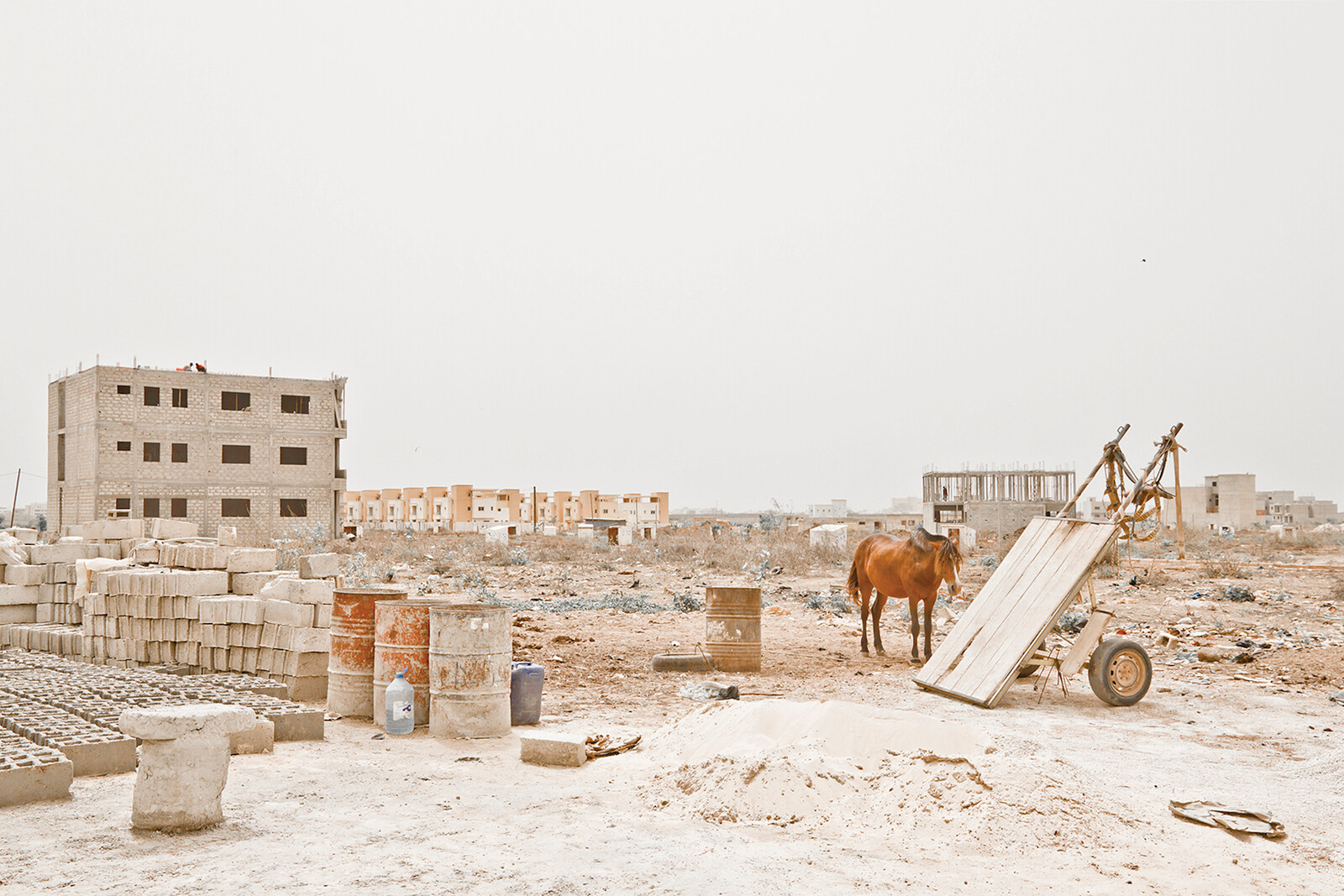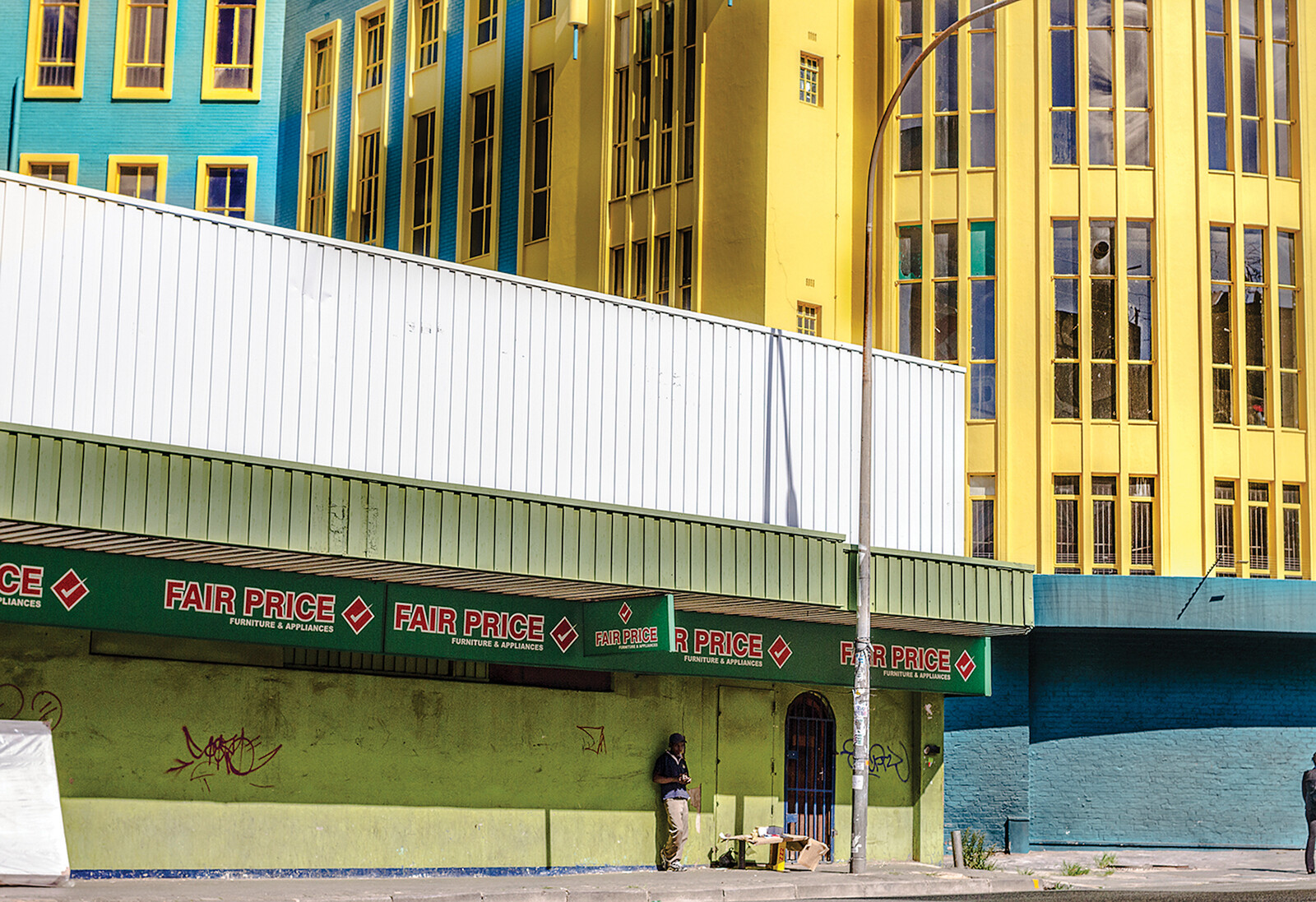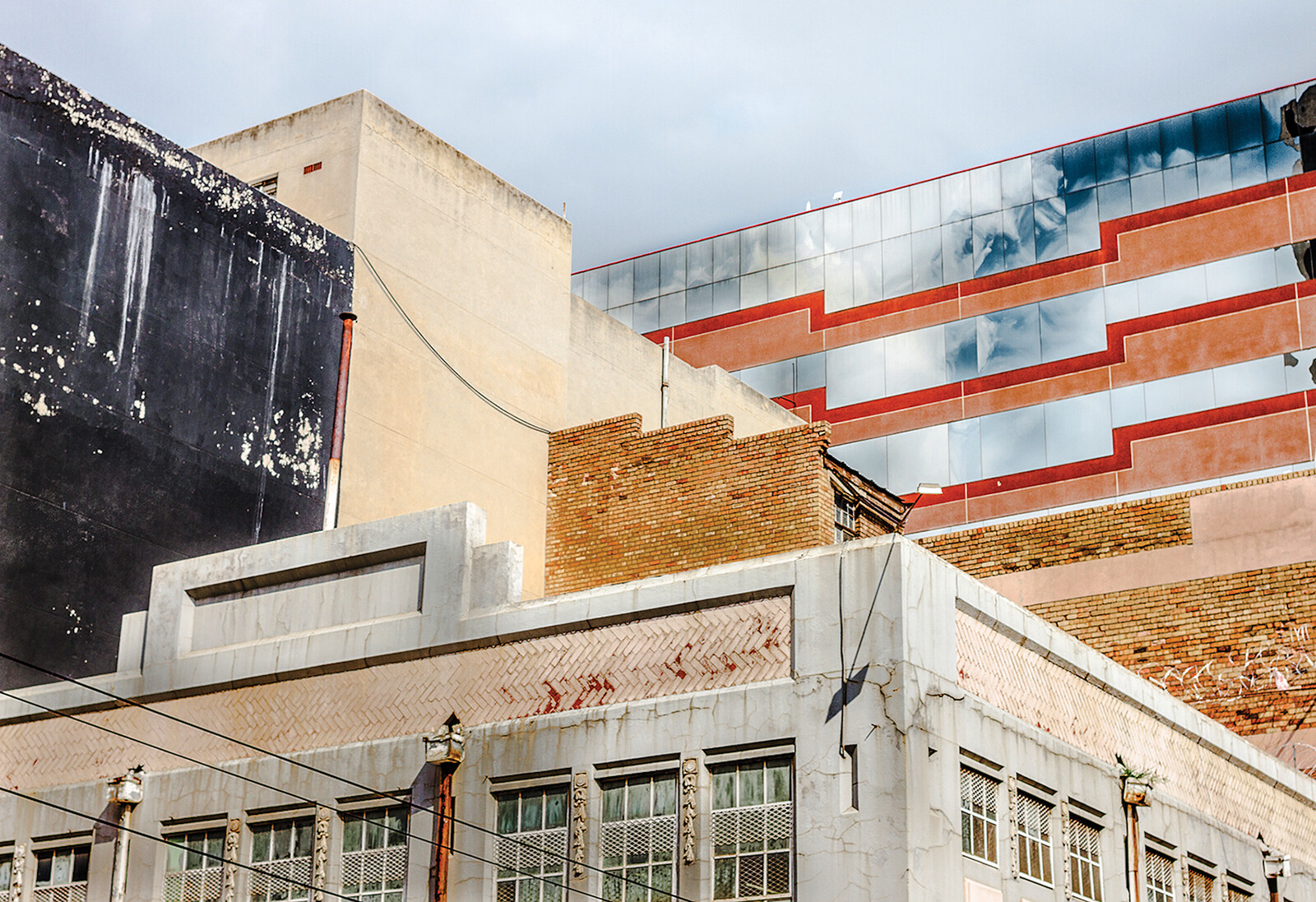Paris-based artist Mame-Diarra Niang’s debut book, The Citadel: a trilogy, is a plush and enigmatic showcase of her interest in “the plasticity of territory”; more pointedly, of her use of the landscape genre as self-reflexive tool of knowing, basically as mirror. The multi-part book compiles discrete photo essays produced—and previously exhibited—in two African cities, Dakar and Johannesburg, between 2013 and 2016. The publication makes concrete the formal arrangement of each essay, as well as unifying them under a common rubric. The Citadel follows a number of ambitious books describing Africa’s complex urbanism, among them Guy Tillim’s Jo’burg (2005) and Joburg: Points of View (2014) and Filip De Boeck and Sammy Baloji’s hardcover tome Suturing the City: Living Together in Congo’s Urban Worlds (2016). Its distinction emerges out of Niang’s willingness to subordinate documentary exegesis to mythic questing.
The tension between self and place is central to the slow crescendo proposed by the three individually titled and numbered books—Sahel Gris, At the Wall, and Metropolis—that constitute The Citadel. “It is important to me to address the representation of the self as a body that does not reduce itself to flesh, but possesses many places ‘without place’,” Niang stated in a 2015 interview. The individual books, which are each differently sized and distinctively bound, are housed like Jenga wood blocks in a white cardboard box. Similar to Mikhael Subotzky and Patrick Waterhouse’s multi-part photobook Ponte City (2014), this presentation box features a grainy monochrome reproduction of a 2013 color photo taken in a new residential development in Ouakam, one of the Senegalese capital’s ritzier northern suburbs. Niang has described this neighborhood as “the new face of Dakar.”
Born in Lyon to Senegalese parents, Niang spent her childhood shuttling between France, Ivory Coast, and Senegal. In 2007, she returned to Senegal to bury her father, Cheikh Niang. Dakar’s coastal desert hues were familiar to the artist, but its newer, western-influenced cellular forms of suburban living less so. Sahel Gris, the accordion-fold first book in The Citadel, presents a drift through a work-in-progress residential enclave near Dakar’s former international airport. The book’s title denotes both a place (Sahel is a semi-arid region of Western and North-Central Africa) and a color (gris is French for grey). The organization of the photos charts an interested, if not wholly committed, ambulatory passage from scrubland periphery to stucco-walled center. There are no juxtapositions, a standard editing method of photobooks, just a gradual unfolding of built things.
Niang’s photos, which have been bleached of vibrancy in post-production, are noticeably bereft of human presences. Occasionally we sight a stooped laborer in the emergent suburb. The sky is uniformly cloudless and gray throughout. Sahel Gris is an object lesson in Niang’s recondite method. Recondite? Unlike writer and filmmaker Ousmane Sembène, who satirized Dakar’s bourgeoisie in his satirical 1973 novel Xala (it became a film in 1975), Niang does not declare an ethical imperative. She also does not ask, not explicitly, if the construction of such “highly circumscribed, well-managed, and guarded sub-territories of the city” are compensation for “greater precariousness elsewhere in the urban system,” to quote urban theorist AbdouMaliq Simone.1 Sahel Gris is without an explanatory text; there are also no photo captions. Niang’s disappointment at Dakar’s adoption of exhausted western models of suburban living is registered elsewhere, in online interviews that preceded her book by a decade.
The emphatic final image of Sahel Gris, a close-up view of an unpainted and unoccupied new residential complex, provides the cue for the straight photos appearing in At the Wall. This book comprises two perfectly bound paperback books presented opposite each other inside a hard cover. All the photos were taken from a moving taxi, which accounts for the uniform prospect, recurrence of obscuring walls, and occasional blurry subject. Dakar, it would seem, is a city of unpainted surfaces and unfinished building projects. At the Wall includes two incidental views of Dakar’s African Renaissance Monument (2010), a bronze ceremonial sculpture depicting an idealized Black family that was designed and fabricated by North Korean contractors. Human inhabitants only fleetingly register, walking, waiting on transport, or staring at the photographer.
The third and largest book, Metropolis, shifts the focus from West to Southern Africa. Printed on glossy paper and bound with Japanese fold, Niang’s color photos of central Johannesburg were again taken from a moving car. It is a method that embraces immediacy and chance: “it’s always about the first look, the first image,” the artist has said. In a photo centrally depicting the Carlton Centre, a concrete skyscraper that was once Africa’s tallest building, competing temporalities are registered in the diverse brick and steel buildings. Johannesburg’s bricolage of styles is obvious. Niang is not seeking to chart an architectural history; rather, pattern and texture recur as interests in her color photos of flattened and overlapping vertical structures seemingly built for a world without people.
“How you see the landscape is how you see yourself—it’s your form, your representation of yourself, like a mirror,” she stated in 2015. Metropolis includes excerpts from book six of Virgil’s Aeneid (ca. 19 BCE) in which the Trojan Aeneas journeys to the underworld and meets with his deceased father. “So they wander here and there through the whole region … and gaze at everything.” It is a pithy summary of Niang’s method, which yokes material things in service of cryptic self-discovery. Fittingly, the book ends with an image of a man standing on a rooftop, cumulous rain clouds looming; he is seemingly taking a selfie.
Mame-Diarra Niang’s The Citadel: a trilogy is published by MACK.
AbdouMaliq Simone, The Social Infrastructures of City Life in Contemporary Africa (Uppsala: Nordic Africa Institute, 2012), 21.




